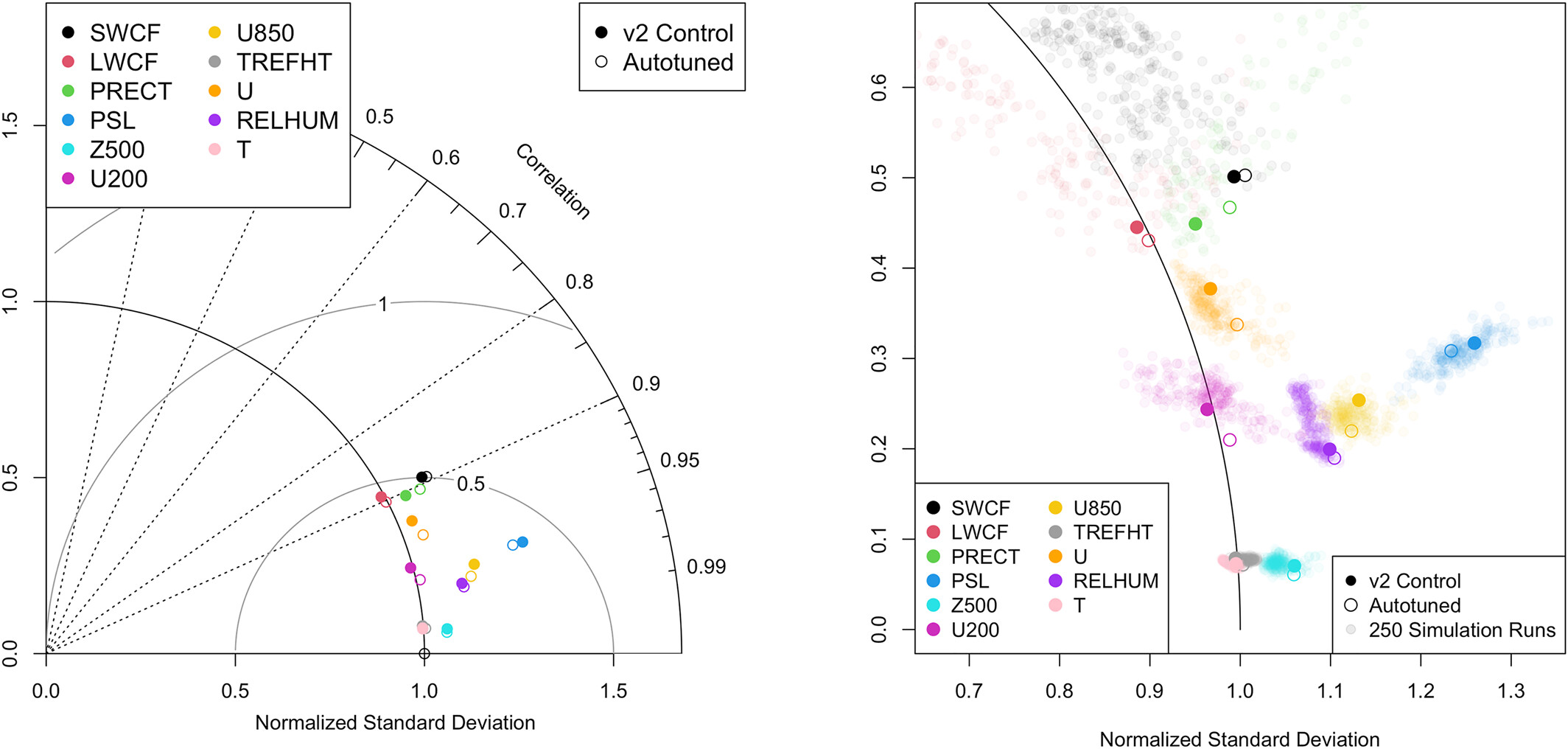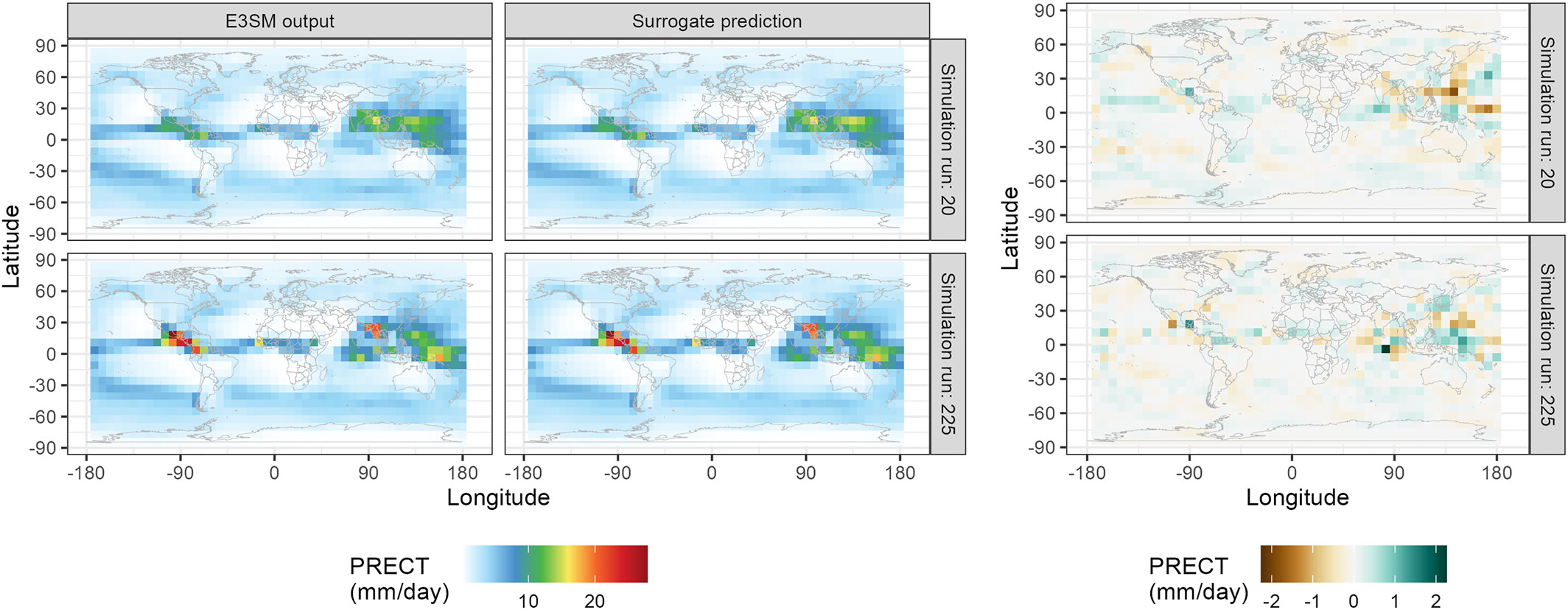Autocalibration of the E3SM Atmosphere Model Improves Model Fidelity

Figure 1. Taylor diagram of automatically-calibrated (open circles) and control parameters (hand-tuned, closed circles) for the season March–April–May. (Left) The entire Taylor diagram for the v2 control and automatically-calibrated parameter set. (Right) A zoomed-in version of the plot on the left, with the performance of the 250 simulation runs also plotted lightly in the background (small transparent closed circles).
Parameterization in Earth System Models (ESMs) is made faster and more accurate by using machine learning.
The Science
The systems governing the atmosphere and other physical processes on Earth are complex, and climate scientists use ESMs based on physical and computational representations of these processes to create simulations that mimic the behavior of Earth’s climate. Since ESMs are defined at a lower resolution than some processes require, parameters are introduced to address the uncertainty in the approximation. The traditional approach is to hand‐tune these parameters using expert knowledge, a time‐consuming process that involves matching climate model output to observational data on Earth, as closely as possible.
The Impact
The researchers demonstrate a method to calibrate ESMs in an automated way using machine learning (Fig. 1) that is significantly faster and performs better in many cases than the hand-tuning process of ESMs. This method is intended to work alone or in tandem with expert tuning. Improvements in model tuning can contribute to improvements in model predictions of the past, present, and future, and a better understanding of uncertainty.

Figure 2. Energy’s Energy Exascale Earth System Model (E3SM) and surrogate-predicted output for time-averaged precipitation (PRECT) during Jun., Jul., Aug. (JJA). The first column shows the model output for two different realizations (top and bottom), the second column depicts the surrogate model output, and the third shows their difference.
Summary
Instead of the tedious by-hand calibration, the researchers introduce an alternative “automated calibration” framework that chooses such parameters automatically and in a fraction of the time. This is done by building a very fast machine‐learning‐based substitute (surrogate) for the ESM to predict variability in the climatology for 11 different spatial fields over four seasons and then using this surrogate to search for the parameters that best match climate observations. They apply their framework to the atmospheric component of the Department of Energy’s Energy Exascale Earth System Model (E3SM) version 2 (Fig. 2), and use a 250-member perturbed parameter E3SMv2 ensemble to train a polynomial chaos surrogate model and optimize input parameters. The researchers demonstrate an improvement of 2.7% in root‐mean‐squared‐error (RMSE) on average across the different variables and seasons, compared to the hand‐tuned solution. This flexible, robust, and automated approach is straightforward to implement, and the resulting model output matches present-day climate observations as well or better than the corresponding output from expert-tuned parameter values while considering high‐dimensional output and operating in a fraction of the time.
Publication
- Yarger, Drew, Benjamin Moore Wagman, Kenny Chowdhary, and Lyndsay Shand. 2024. “Autocalibration Of The E3Sm Version 2 Atmosphere Model Using A Pca‐Based Surrogate For Spatial Fields”. Journal Of Advances In Modeling Earth Systems 16 (4). American Geophysical Union (AGU). doi:10.1029/2023ms003961.
Funding
- This work was supported by the Earth System Model Development program area of the Department of Energy, Office of Science, Biological and Environmental Research program.
Contact
- Benjamin M Wagman, Sandia National Laboratories
This article is a part of the E3SM “Floating Points” Newsletter, to read the full Newsletter check:


